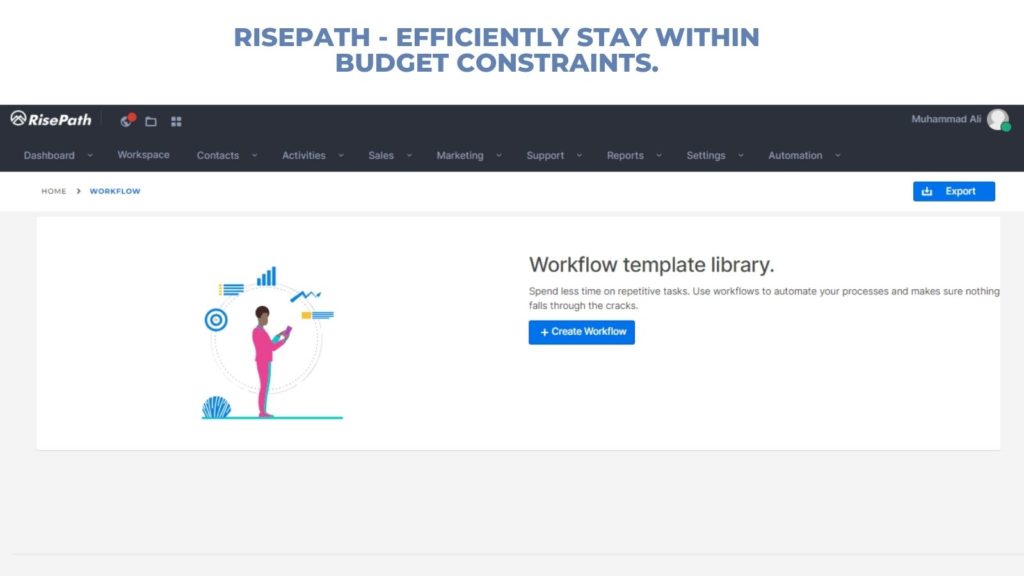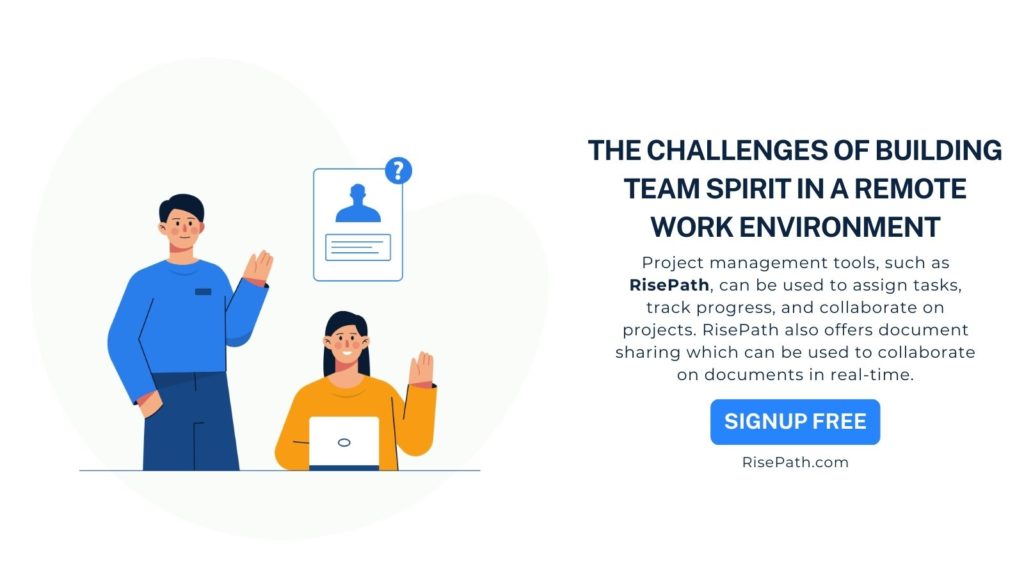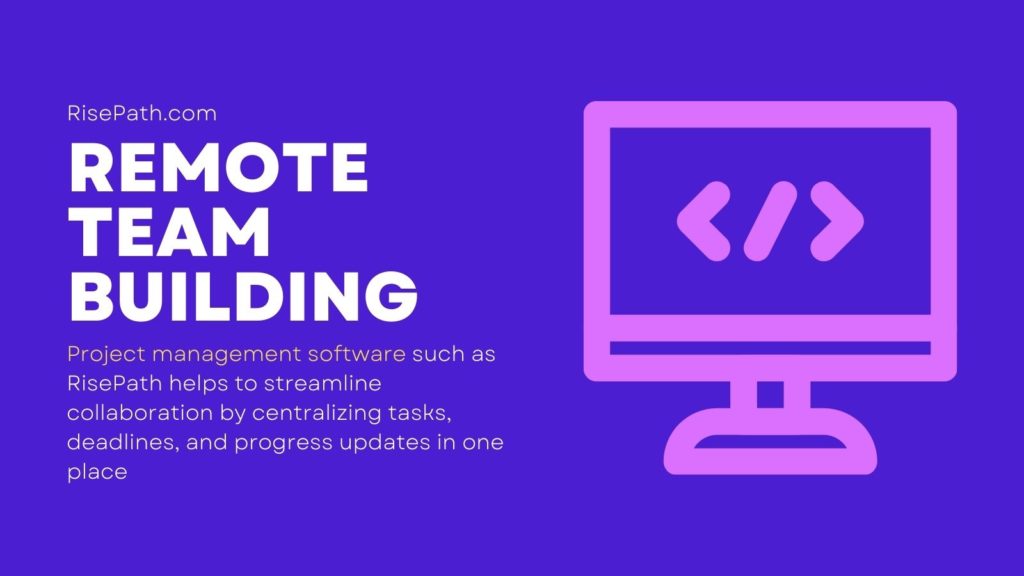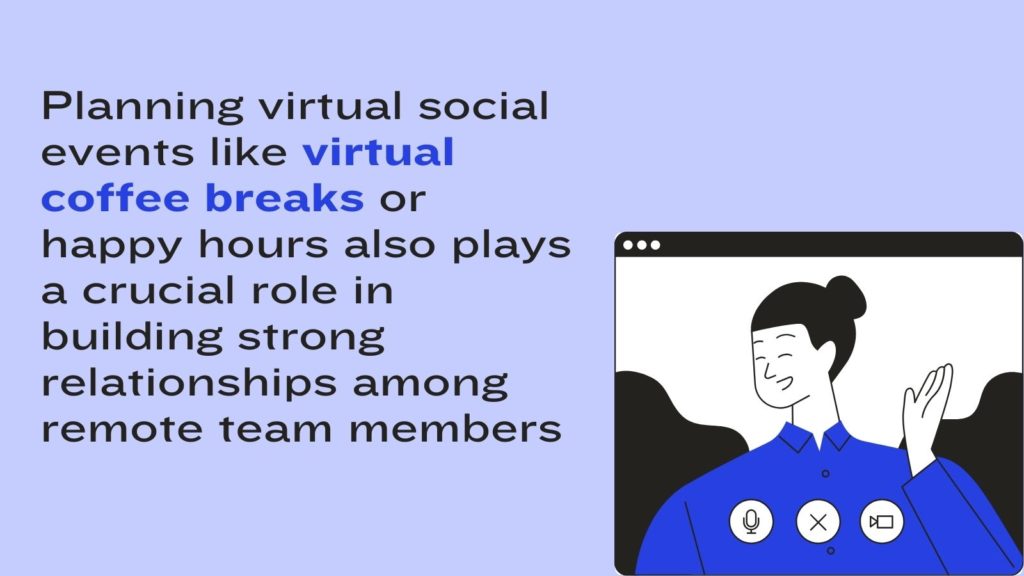Welcome to the ultimate guide to successful team building in a remote work environment. In today’s increasingly digital world, creating a connected and engaged remote team has become more important than ever. Whether you’re leading a team or part of one, this guide will provide you with the tools and strategies to build a strong and cohesive remote team.
From fostering communication and collaboration to promoting a positive team culture, we’ll explore various techniques to help you thrive in the virtual workplace. Get ready to discover the secrets to building a high-performing remote team that not only meets but exceeds goals and expectations. Let’s dive in!
Building Trust and Rapport
Regular virtual team meetings are essential for creating a connected and engaged remote team. These meetings serve as a platform for team members to openly communicate with each other, discuss their progress, share challenges, and exchange ideas. By providing this opportunity for regular interaction, team members can establish rapport and trust, which is crucial for effective collaboration. 4
Moreover, icebreaker activities and team-building exercises can play a significant role in fostering camaraderie among remote team members. These activities help to break the ice and create a sense of belonging and unity within the team.
When team members feel connected and comfortable working together, they are more likely to collaborate effectively and contribute to the team’s success. Another important aspect of building a connected and engaged remote team is encouraging regular feedback and active listening.
This demonstrates that everyone’s opinions and perspectives are valued, which in turn helps to build trust. Actively listening to team members’ ideas and concerns fosters a collaborative environment where everyone feels heard and appreciated.
Finally, establishing clear expectations and goals from the beginning is crucial for building trust and promoting transparency within a remote team. When team members understand what is expected of them and have a clear understanding of the team’s goals, it helps to align everyone’s efforts and ensures that everyone is on the same page.
This clarity eliminates confusion and ambiguity, thereby fostering trust and accountability within the team. By implementing these strategies, remote teams can create a connected and engaged work environment where team members feel valued, connected, and motivated to contribute their best work.
Regular virtual team meetings
Setting a consistent schedule for virtual meetings is essential for creating a sense of structure and reliability among team members. When everyone knows when and how often they will be meeting, it promotes trust and engagement within the team.
Additionally, dedicating time during these meetings for each member to share updates or concerns is crucial. This allows everyone to feel heard and valued, fostering trust and a positive team dynamic. Moreover, using video conferencing tools during virtual meetings can greatly enhance rapport among team members.
Being able to see facial expressions and body language facilitates better communication and helps build stronger connections. And let’s not forget about the power of virtual icebreakers. Incorporating fun and interactive activities at the beginning of each meeting can help remote teams bond on a personal level, improving trust and collaboration.
Icebreaker activities and team-building exercise
Engaging in icebreaker activities like sharing interesting facts or playing online games is a great way for remote teams to get to know each other better and build rapport. These fun and interactive activities help break the ice and create a sense of camaraderie among team members. It encourages open communication and creates a comfortable environment where everyone feels connected.
Encouraging team members to participate in fun challenges or contests further strengthens the sense of belonging within the remote team. By actively engaging in these activities, team members develop trust bonds and feel more invested in the team’s success. Planning virtual social events like virtual coffee breaks or happy hours also plays a crucial role in building strong relationships among remote team members. These informal interactions provide opportunities for team members to connect on a personal level, fostering a sense of unity and team spirit.
Additionally, including collaborative projects or workshops during team-building exercises encourages teamwork, boosting morale and trust within the remote team. By working together towards a common goal, team members learn to rely on and support each other, creating a strong foundation of trust and collaboration.
Effectively Communicating
To effectively communicate with your remote team, it is important to establish clear and concise communication guidelines. This ensures that everyone understands expectations and avoids miscommunication. By setting guidelines, team members know the preferred methods of communication, response times, and any relevant protocols. Using various communication tools can help facilitate effective communication within a remote team.
Tools such as video conferencing, instant messaging, and project management software can enhance collaboration and keep team members connected. Leveraging these tools allows for real-time communication, file sharing, and seamless collaboration on projects.
Active listening is an essential skill for effective communication in a remote team. It involves fully focusing on and understanding what the other person is saying, without interrupting or formulating a response before they have finished speaking. Actively listening fosters empathy, understanding, and effective problem-solving.
Regularly providing feedback to team members is crucial for maintaining open lines of communication and fostering continuous improvement. Feedback helps individuals understand how their work is perceived and provides valuable insights for growth and development. By giving constructive feedback, remote teams can ensure that everyone is aligned and working towards common goals.
Clear and concise communication guidelines
Establishing clear channels of communication is essential for avoiding confusion in a remote team. This can be achieved by designating specific email threads or utilizing project management software platforms. By having dedicated channels, team members know where to go for important updates and discussions, ensuring that communication is organized and accessible.

Additionally, creating a shared understanding of abbreviations and acronyms used within the team helps messages to be easily understood by all members. This eliminates any potential misunderstandings or misinterpretations that can arise from different interpretations of jargon. Furthermore, setting expectations for response times and availability is crucial for maintaining efficient communication within a remote team.
By establishing guidelines around when team members should be available and how quickly they should respond, everyone can better plan and prioritize their work. Lastly, encouraging open dialogue and creating a safe space for sharing ideas is key to promoting effective communication in a remote team. When team members feel comfortable expressing their thoughts and opinions, it fosters an environment of collaboration and innovation.
Utilizing various communication tools
Video conferencing platforms like Zoom or Microsoft Teams have become essential tools for remote teams as they allow for face-to-face interactions despite physical distance. This helps to maintain personal connections within the team, fostering a sense of camaraderie and engagement. Instant messaging apps like Slack or Microsoft Teams also play a crucial role in enabling real-time communication among team members. These platforms provide quick and efficient channels for exchanging information, discussing ideas, and addressing any challenges that may arise.
Additionally, project management software such as RisePath helps to streamline collaboration by centralizing tasks, deadlines, and progress updates in one place. This ensures that everyone is on the same page and allows for seamless coordination and efficient workflow.
Furthermore, the screen sharing capabilities offered by video conferencing tools enhance virtual meetings by facilitating visual presentations or demonstrations. This enables team members to share their work, provide updates, or showcase their ideas effectively, leading to more productive and engaging discussions.
Promoting Collaboration and Engagement
To promote collaboration and engagement within a remote team, it is important to establish clear goals and expectations. This not only helps team members align their efforts towards a common objective but also provides them with a sense of purpose and direction. Regularly encouraging open communication among team members is crucial for fostering collaboration and engagement. Whether through virtual meetings, brainstorming sessions, or even informal chats, creating a space where ideas can freely flow and be shared promotes a sense of camaraderie and innovation.
Additionally, creating a sense of belonging within the team is essential for promoting collaboration and engagement. This can be achieved by organizing team-building activities, virtual social events, or even celebrating milestones together. By fostering a supportive and inclusive environment, team members are more likely to collaborate and engage with one another.
Furthermore, providing opportunities for collaboration through virtual collaboration platforms such as project management tools or shared document platforms can greatly enhance teamwork and engagement. These platforms facilitate seamless communication, file sharing, and coordination, allowing team members to work together effectively and efficiently.
Setting clear goals and expectations
Setting clear goals and expectations is vital for creating a connected and engaged remote team. By clearly defining objectives, team members can fully understand what is expected of them and have a clear sense of direction. This clarity helps align individual efforts towards achieving shared goals, ensuring that everyone is working towards the same objectives.
Moreover, clearly defined expectations help to avoid confusion or misunderstandings within the team. When everyone knows what is expected of them, they can work more efficiently and effectively, without wasting time or energy on unnecessary tasks.
Also Read: A Blueprint for onboarding a new employee
Additionally, setting measurable goals allows team members to track their progress and stay motivated. When milestones are reached, it creates a sense of accomplishment and fuels their enthusiasm to keep striving for success.
Lastly, when goals and expectations are communicated clearly, it facilitates better decision-making within the team. With a clear understanding of priorities, team members can make informed choices that align with the overall objectives, leading to more effective collaboration and outcomes.
Encouraging virtual collaboration platforms
Virtual collaboration platforms provide remote teams with the tools to communicate effectively regardless of their physical location. These platforms offer features such as video conferencing, instant messaging, file sharing, and project management tools. With the help of these platforms, team members can collaborate in real-time, even if they are in different time zones.
This allows for seamless communication, file sharing, and feedback exchange, making it easier for team members to work together efficiently. Moreover, virtual collaboration platforms foster transparency within the team by providing visibility into ongoing projects, tasks, deadlines, and progress updates.
This helps keep everyone informed about each other’s work and ensures that everyone is on the same page. By encouraging the use of these platforms, team members can easily collaborate on projects, share ideas, and provide feedback. This enhances teamwork and engagement by promoting active participation and involvement, ultimately leading to more successful outcomes.
Nurturing Relationships and Connection
Building trust and rapport among team members is essential for creating a connected and engaged remote team. Regular communication channels such as video conferences, instant messaging, and email can help maintain strong relationships in a remote team. By utilizing these platforms, team members can regularly connect with one another, staying updated on work progress, discussing challenges, and providing support.
Additionally, encouraging team members to share personal interests and hobbies promotes a sense of connection and camaraderie. Taking the time to learn about each other’s passions and hobbies can help team members bond and build stronger relationships.
Furthermore, providing opportunities for virtual coffee breaks or informal chats can foster a sense of belonging among remote team members. These casual interactions allow team members to connect on a more personal level, share stories, and simply enjoy each other’s company. This helps create a supportive and inclusive environment where team members feel valued and connected, ultimately leading to a more engaged and productive remote team.
Virtual team-building activities
In addition to regular team meetings and icebreaker activities, there are several other strategies you can implement to create a connected and engaged remote team. Organizing online games or quizzes that encourage collaboration and teamwork can be a fun way for team members to interact and bond. These activities can help foster a sense of camaraderie and encourage communication and problem-solving skills.
Another idea is to host virtual happy hours or social events to help remote team members relax and connect on a personal level. This informal setting allows team members to unwind, share stories, and strengthen relationships outside of work-related tasks. Implementing virtual icebreaker activities can also be beneficial in breaking the ice and building relationships among remote team members.
These activities can be simple, such as sharing interesting facts about themselves or playing a round of “Two Truths and a Lie.“
Lastly, facilitating online team-building workshops or training sessions can enhance communication and cooperation skills within the team. These sessions can provide valuable insights and techniques for effective collaboration, problem-solving, and conflict resolution. By investing in these activities and workshops, you can foster a sense of connection and engagement among your remote team members.
Celebrating milestones and achievements
Recognizing individual accomplishments is crucial for building a connected and engaged remote team. One effective way to do this is through public acknowledgments or rewards. By publicly recognizing and celebrating the achievements of team members, you not only make them feel valued and appreciated but also inspire others to strive for excellence.
Another way to foster a culture of recognition is by organizing virtual celebrations for birthdays, work anniversaries, or other significant milestones. These virtual gatherings provide an opportunity for the team to come together and celebrate each other’s achievements, even from a distance.
Also Read: Mastering workflow Management Marketing Efficiency
Additionally, creating a culture of appreciation involves regularly expressing gratitude for the contributions of each team member. Simple gestures like saying “thank you” or recognizing their efforts during team meetings can go a long way in boosting morale and fostering a positive work environment.
Lastly, sharing success stories and achievements with the entire remote team can inspire motivation and boost morale. By highlighting the accomplishments of individuals, you not only acknowledge their hard work but also inspire others to strive for similar achievements. This creates a sense of camaraderie and encourages everyone to put in their best effort.
Managing Conflict and Resolving Issues
Conflict within a team is a common occurrence, often stemming from different perspectives and goals. However, it is essential to address these conflicts early on to prevent them from escalating into larger issues. Active listening and empathy are crucial skills that team members can cultivate to resolve conflicts effectively.
By truly understanding each other’s viewpoints and concerns, team members can find common ground and work towards collaborative problem-solving. This approach can lead to win-win solutions that benefit everyone involved and promote a harmonious and productive remote team environment.
Establishing a conflict resolution process
Creating clear guidelines for conflict resolution is essential in ensuring that remote teams can navigate disagreements effectively. By establishing a set of rules and procedures, team members have a framework to follow when conflicts arise.
Additionally, having a designated mediator or facilitator can contribute to fair and impartial conflict resolution. This person can help mediate discussions, ensure that all voices are heard, and guide the team towards finding a resolution that satisfies everyone involved. It is also important to regularly review and update the conflict resolution process to allow for continuous improvement and adaptation to changing circumstances.
Lastly, documenting conflicts and their resolutions can be highly beneficial. This practice helps track patterns, identify recurring issues, and provides valuable insights for preventing and addressing conflicts in the future. By implementing these strategies, remote teams can effectively manage conflicts and maintain a harmonious and productive work environment.
Encouraging open and honest communication
Promoting an environment where team members feel safe expressing their opinions is crucial for fostering open communication within a remote team. This creates a space where ideas can be freely shared and considered, leading to innovative solutions and enhanced collaboration. Active listening, asking questions, and seeking clarification are key components of effective communication in a remote setting.
By actively engaging in conversations and showing genuine interest in others’ viewpoints, team members can build rapport and understanding. Encouraging feedback and providing opportunities for anonymous suggestions can also help overcome communication barriers, as individuals may feel more comfortable sharing their thoughts without fear of judgment or reprisal.
Regular team meetings and check-ins further contribute to transparent communication and alignment, ensuring that everyone is on the same page and working towards common goals.
Supporting Professional Development
To support professional development and help team members enhance their skills, it is crucial to provide various opportunities for skill development. This can be achieved through training programs, workshops, and online courses. By offering these resources, individuals can learn new techniques, stay updated with industry trends, and expand their knowledge base.
Additionally, mentorship programs can be implemented to support professional growth. Pairing experienced professionals with newcomers allows for valuable insights and guidance, fostering skill development and career advancement.
Furthermore, coaching programs can be highly beneficial. Coaches can provide personalized guidance, feedback, and support to individuals looking to improve their skills and reach their full potential.
Lastly, creating a culture of continuous learning is essential. Encouraging employees to engage in self-directed learning and providing resources like books, podcasts, and webinars can contribute to their growth and foster a mindset of lifelong learning within the team. By prioritizing professional development, teams can ensure that their skills and knowledge remain up-to-date, leading to improved performance and success.
Providing opportunities for skill development
One way to provide opportunities for skill development is by offering cross-training programs. This allows employees to learn new skills and gain experience in different areas of the organization. By participating in these programs, individuals can broaden their knowledge base and acquire a diverse set of skills, making them more versatile and adaptable in their roles.
Additionally, organizing workshops and seminars on specific topics related to the job can also provide opportunities for skill development. These events can be led by internal experts or external trainers, allowing employees to learn from industry professionals and gain unique insights. The interactive nature of these sessions allows for hands-on learning and the exchange of ideas, enhancing skill development.
Also Read: The Role of Email Marketing in Customer Retention
Another effective way of providing opportunities for skill development is by assigning challenging projects or tasks that require the acquisition of new skills. By encouraging employees to step out of their comfort zones and take on unfamiliar responsibilities, they can develop new abilities and expand their expertise. This not only benefits the individual but also the organization, as it fosters a culture of continuous learning and growth.
Furthermore, encouraging employees to attend conferences, industry events, and networking sessions can expose them to new ideas and perspectives, which can contribute to their skill development. These gatherings provide opportunities for individuals to connect with industry leaders and peers, learn about emerging trends and best practices, and expand their professional networks. By actively engaging in these activities, employees can stay updated with the latest developments in their field and stay ahead of the curve.
Overall, by implementing a combination of cross-training programs, workshops, challenging projects, and networking opportunities, organizations can provide a comprehensive and varied approach to skill development for their employees.
Offering mentorship and coaching programs
Establishing a formal mentoring program can be a valuable strategy for supporting professional development within a remote team. By pairing experienced employees with less experienced ones, the mentor can provide guidance, share their knowledge and expertise, and offer valuable support throughout the mentee’s career journey. This not only enhances the mentee’s skills and knowledge but also promotes a sense of connection and engagement within the team.
Additionally, offering coaching programs where employees have one-on-one sessions with a coach can further contribute to their growth and development. The coach can provide personalized feedback, guidance on career goals, and assist in skill development.
Another effective approach is implementing a buddy system for new hires, where they are paired with a more experienced colleague who acts as a mentor during their onboarding process. This helps new team members integrate into the team more seamlessly and fosters a sense of belonging.
Lastly, creating a culture of peer coaching, where employees are encouraged to share knowledge and skills with each other, can enhance collaboration and foster a continuous learning environment within the team. By leveraging these strategies, organizations can support professional development and empower their remote teams to reach their full potential.
Maintaining Motivation and Morale
Maintaining motivation and morale in a remote team is crucial for the success and productivity of the team. Regularly checking in with team members to understand their needs and concerns is essential. By taking the time to listen and address any challenges they may be facing, you can show that you value their well-being and are committed to their success.
Additionally, recognizing and celebrating individual and team achievements can go a long way in boosting morale and motivation. Whether it’s a small accomplishment or a big milestone, acknowledging the hard work and dedication of team members creates a positive and supportive work environment.
Providing opportunities for professional development and growth is another important aspect of keeping team members engaged and motivated. Offering training programs or workshops not only helps individuals acquire new skills but also demonstrates your investment in their long-term success. Finally, encourage open communication and feedback within the team.
By creating a safe space for everyone to share their thoughts and concerns, you can address any challenges or issues that may arise and find solutions together. This fosters a sense of trust and collaboration, leading to a more engaged and motivated remote team.
Setting achievable targets and rewards
Setting clear and specific goals for each team member is essential to ensure they have a sense of direction and purpose. By clearly outlining the objectives and expectations, employees can align their efforts and work towards a common goal.
Additionally, rewarding team members for meeting milestones or completing tasks can reinforce positive behavior and motivate them to continue performing well. This recognition and appreciation boost morale and create a supportive work environment. To prevent overwhelm and promote productivity, breaking larger projects into smaller, manageable tasks with achievable deadlines is crucial. This approach helps employees stay focused, organized, and motivated as they tackle each task step by step.
Finally, regularly reviewing progress towards goals with team members allows for constructive feedback and guidance along the way. This feedback loop ensures that everyone is on track, addresses any challenges, and offers support when needed. By implementing these strategies, organizations can create a connected and engaged remote team, driving success and productivity.
Creating a supportive and inclusive environment
Fostering a culture of collaboration is key to creating a connected and engaged remote team. Encouraging teamwork and cooperation among remote team members promotes inclusivity and ensures that everyone’s voices and ideas are valued, regardless of their role or seniority.
Additionally, providing resources and support for personal well-being, such as mental health initiatives or flexible work arrangements, helps team members thrive both professionally and personally.
To strengthen relationships among remote team members, organizing virtual social events or team-building activities is a great way to create a sense of camaraderie and connection. By implementing these strategies, organizations can cultivate a collaborative and inclusive environment where remote teams can thrive.
Conclusion
In conclusion, creating a connected and engaged remote team requires deliberate effort and effective strategies. Building trust and rapport through regular team meetings and icebreaker activities is essential for fostering strong relationships. Clear and concise communication guidelines, coupled with the use of various communication tools, help ensure effective communication among team members. Promoting collaboration and engagement can be achieved by setting clear goals and expectations, as well as encouraging the use of virtual collaboration platforms.
Nurturing relationships and connection is crucial, and can be accomplished through virtual team-building activities and celebrating milestones and achievements.Managing conflict and resolving issues requires establishing a conflict resolution process and encouraging open and honest communication. Supporting professional development is also important, by providing opportunities for skill development and offering mentorship and coaching programs.
Maintaining motivation and morale is crucial for the success and productivity of the team. Regular check-ins, recognizing and celebrating achievements, and providing opportunities for growth all contribute to creating a positive and supportive work environment.
Setting achievable targets and rewards, and creating a supportive and inclusive environment are also important aspects of maintaining motivation and fostering a connected and engaged remote team. By implementing these strategies, organizations can create a strong and successful remote team that thrives in a virtual work environment.





Comments are closed, but trackbacks and pingbacks are open.